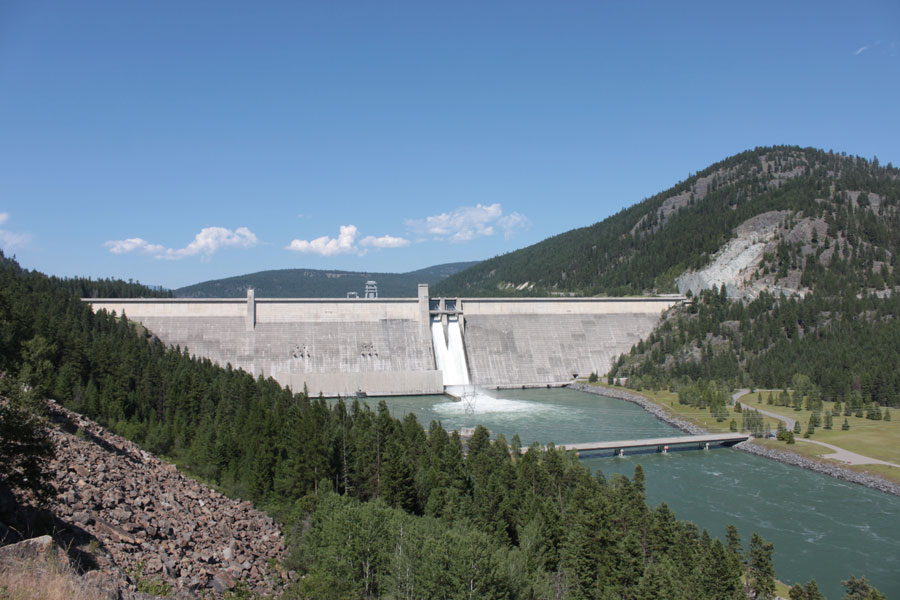The first two days of negotiations on modernizing the Columbia River Treaty between the U.S. and Canada wrapped up last week as the neighboring countries worked to reconfigure a model for sharing natural resources for flood management, hydropower operations and conservation.
During the two days of talks in Washington, D.C., the U.S. and Canadian negotiators discussed objectives and reaffirmed the spirit of cooperation between the two countries.
The U.S. negotiation team included representatives of the Interior Department, the State Department, the Bonneville Power Administration, the U.S. Army Corps of Engineers, and the National Oceanic and Atmospheric Administration.
On a conference call with reporters June 1, senior officials with the State Department defined the U.S. objectives as “careful management of flood risk, ensuring a reliable and economical power supply, and better addressing ecosystem concerns in a modernized treaty regime.”
“That was the scope, and it’s as far as I want to go in terms of scope,” one senior official said, adding that the talks were “very productive.”
The Columbia River Treaty is a half-century-old accord that mainly governs hydropower and flood-control operations along the 1,200-mile Columbia River. Set to expire in 2024, the deal needs to be updated to address modern-day concerns, like environmental protections, while taking into consideration the wants and needs of scores of stakeholders.
First signed in 1964, the Columbia River Treaty governs the operations of dams and reservoirs in one of North America’s largest river systems, a drainage basin roughly the size of Texas that includes parts of Washington, Oregon, Idaho, Montana, Utah, Wyoming, and British Columbia.
The treaty between the U.S. and Canada resulted in the construction of four large dams — three in British Columbia and one in Montana, the Libby Dam — in an effort to prevent devastating floods and generate hydroelectricity. Prior to the construction of the treaty dams, spring floods frequently devastated the region, most notably a 1948 flood in Vanport, Oregon, a disaster that killed more than 30 people.
It had the combined effect of doubling the storage capacity in the Columbia River basin.
“It was huge,” said Mike Hansen of the Bonneville Power Administration. “On the U.S. side of the border, we don’t have a lot of storage capacity, and geologically Canada had the right places to build these facilities.”
The treaty has no expiration date, but either country can cancel it or suggest changes beginning in 2024, as long as they give a 10-year notice. Water regulators and interested shareholders on both sides of the international border have long discussed potential changes to the treaty, and in late 2013 those amendments were submitted to the U.S. State Department, which leads negotiations with Canada.
Chief among those changes are environmental concerns that were not considered in 1964, such as the effects of climate change and glacial melt on water flows, and salmon, bull trout and white sturgeon fisheries.
“We have a lot of new interests that weren’t really considered when the treaty was signed in 1964,” Hansen said. “We are taking into account fish and wildlife, biological opinions, interest in irrigation, navigation and recreation.”
Native American tribes in the U.S. and Canada are pushing for the return of salmon runs that some of the dams destroyed, but factoring ecosystem functions and environmental restoration into the equation means disrupting traditional water uses like hydropower generation, irrigation and flood control.
The U.S. recommendation suggests both countries should participate in the restoration of fish passages as part of the treaty, while Canada contends that habitat negotiations are not part of the treaty talks.
Another sticking point centers on equitable distribution of payments.
Northwest utilities make an annual payment of between $250 million and $350 million to Canada. Known as the “Canadian Entitlement,” the payments were intended to reimburse Canada for building storage dams to benefit downstream power generation. But a coalition of more than 80 Northwest utilities says the formula is outmoded and overpays Canadians, affecting the monthly bills of 6.4 million U.S. electric customers in the Pacific Northwest.
Those utilities want the U.S. to renegotiate the Canadian Entitlement, believing the price is too steep to sustain.
Still, the treaty is also hailed as an example of international cooperation, designed to create and share benefits between the U.S. and Canada.
The next round of negotiations will take place in August.
